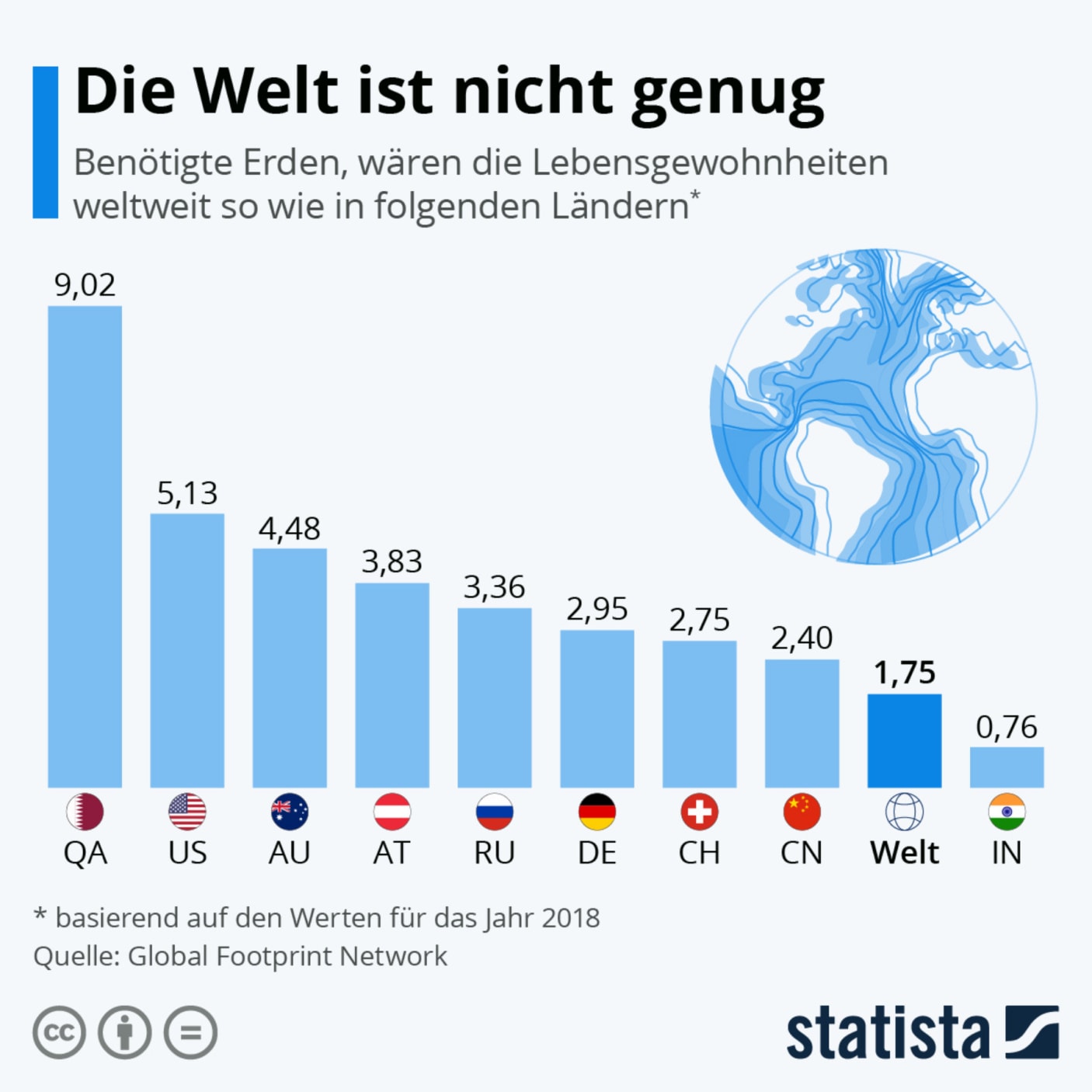Ecological Footprint: What is an ecological footprint?
Translated by Emma FinneyThe ecological footprint indicates how stressful humans are on nature. How is it calculated?
In 2022, Earth Overshoot Day Germany was on May 4th. This marks the day in the year when all the resources the earth can regenerate within a year are used up. A sad record and a devastating balance sheet – our ecological footprint is too high. From this day on, we’ve been living on credit – we borrow our wealth by exploiting the earth. All the renewable resources on earth would not be sufficient if everyone lived like us. Every year, the ecological footprint of Germany gets bigger, which means that every year we exploit our planet a little more. In 2021, Earth Overshoot Day Germany fell on May 5th.
What is the ecological footprint?
The ecological footprint makes visible the influence that humans have on the earth’s resources. It indicates how much of the earth we need to secure our modern lifestyle. In other words: how much of the earth’s area do we need to provide food, energy or shelter? Small hint: We consume far too much.
Food, livestock, our heating systems – everything puts a strain on natural resources. The ecological footprint is calculated by comparing our actual consumption of resources with the total biocapacity of the earth. From this, we can calculate how large the maximum ecological footprint can be in order not to harm the earth. The ecological footprint is given in “global hectares”, abbreviated: gha.
How big is the average ecological footprint in Germany?
It would be perfect if we all consumed what is available to us – but unfortunately this is not the case. In Germany, about 1.6 gha are available to each person. The ecological footprint per capita is currently far higher – at 4.7 gha. The frightening truth is that if everyone on earth lived like we do in Germany, we would need three earths.

The ecological footprint and the CO2 footprint – Which is which?
In addition to the ecological footprint, there is another method to determine the influence of humans on the climate – the CO2 footprint. The CO2 footprint indicates how many tons of CO2 we all produce through our daily lifestyle. Our goal with ForTomorrow is to reduce everyone’s CO2 footprint to just one ton per year – and to stop the climate crisis. Currently, we are at about 9 tons per year in Germany.
How do we prevent CO2 emissions and protect our climate?
Our goal at ForTomorrow is to reduce greenhouse gas emissions so that Europe will be climate-neutral before 2040 – so that we can stop the climate crisis. To this end, we use the European Emissions Trading Scheme.
The EU Emissions Trading scheme is THE climate protection tool of the European Union. Large CO2e emitters have to buy CO2 rights in the EU. If they do not, massive penalties will be due and the emission rights will have to be submitted later. By also buying these EU emission allowances and shutting them down unused, ForTomorrow reduces the amount of CO2 that can be emitted by industry in total. Put simply: when we buy the emission allowances, coal-fired power plants cannot emit as much CO2 in the EU.

Sources:
Bocksch, R. (2022). Ökologischer Fußabdruck. Die Welt ist nicht genug. [accessed 28.06.2022].
footprintnetwork.org. Country Trends. [accessed 28.06.2022].
Schneider, G., Toyka-Seid, C. (2022). Ökologischer Fußabdruck. [accessed 28.06.2022].
welthungerhilfe.de. (2022). Auf großem Fuß: Was ist der ökologische Fußabdruck?. [accessed 28.06.2022].
Zeit. (2022). Overshoot Day: Deutschland hat Ressourcen für 2022 bereits am 4. Mai verbraucht. [accessed 28.06.2022].